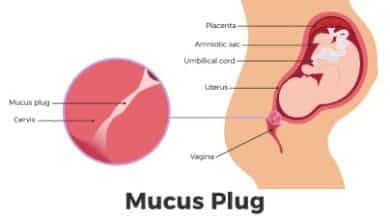What Are The Signs of Labor?
What is labor?
Labor (commonly known as childbirth) is the process by which your baby escapes from the uterus (womb). You are in labor if you have regular contractions that force your cervix to change. The muscles of the uterus contract and then relax during contractions. Contractions help to push your baby from your uterus. The cervix, at the top of the vagina, is the opening to the uterus. Your cervix dilates when labor begins (opens up).
Learning the signs of labor as your due date approaches might help you feel prepared for labor and delivery. If you notice any signs of labor, contact your doctor.
What are Stages of Labor?
Stages of labor refer to the entire labor process, from your first contractions (stage 1) to pushing, (stage 2) to the release of your baby’s placenta, (stage 3) Understanding the stages of labor can prepare you for what to expect during labor and delivery.
What is Preterm Labor?
The labor that begins before the 37th week of pregnancy is defined as Preterm labor. Premature babies (those born before 37 weeks of pregnancy) are at risk for health issues both at birth and later in life. If you’re not yet 37 weeks pregnant and are experiencing signs or symptoms of preterm labor, contact your healthcare provider. The most important thing you can do is get treatment as soon as possible. Learn about preterm labor risk factors and what you can do to lower your risk.
What are the signs of labor?
You will know you’re in true labor when:
You Have Strong and Regular Contractions
A contraction occurs when the muscles of your uterus contract and then relax like a fist. Contractions help in the delivery of your baby. In complete labor, contractions last 30 to 70 seconds and happen every 5 to 10 minutes. You cannot walk or talk during contractions because they are so strong. Over time, they gain strength and become closer together.
You Feel The Pain in Your Belly and Lower Back
As labor approaches, many women have back pain, particularly a dull ache in the lower back that comes and goes. Women may feel a loosening of the joints as the third-trimester proceeds in preparation for delivery.
You Have a Bloody Mucus Discharge
The passing of the mucus plug signals the start of labor. During pregnancy, the cervical opening is generally kept closed by thick mucus produced by the cervical glands. Before birth, this mucus plug must be removed. The mucus plug is pushed out of the vaginal canal by the baby’s head pressure, sometimes as blood-tinged vaginal discharge (“bloody show”).
The mucus plug may not be discharged until after labor begins for some women, while others may observe mucus flow in the days before labor.
Your Water Breaks
In your uterus, your baby has been growing in amniotic fluid (the bag of waters). You may notice a large rush of water if the water bag bursts. You might only feel a trickle.
If you think you are about to go into labor, call your doctor at any time of day or night. If you need to go to the hospital, your provider can tell you. Your health care provider will measure your cervix to confirm that you are in labor.
What Are The Signs That You May be Close to Starting Labor?
If any of the following apply to you, you may be on the brink of giving birth:
Your baby drops or moves deeper into your pelvis.
This is referred to as lightning. It indicates that your baby is preparing to give birth by moving into position. It could happen a few weeks or even hours before your labor starts.
Increase in Vaginal Discharge
This is referred to as a show or a bloody show. It can happen a few days before labor begins or right at the start.
A Prenatal Checkup
Your cervix is usually 3.5 to 4 cm long before labor. It is 10 centimeters when fully dilated (open) for labor. Once labor begins, contractions help in the opening of your cervix.
· You Have The Nesting Instinct
This is the time to organize your home to get ready for your baby’s arrival. You could want to prepare meals or prepare the baby’s clothes and room. Your energy is required for labor and delivery.
If you have any of these symptoms, you may be close to giving birth soon. Learn the signs of labor so you can call your provider
What are False Labor and Braxton-Hicks Contractions?
Not all contractions indicate that you are about to give birth. Before true labor begins, you may experience continuous contractions. False labor or Braxton-Hicks contractions are the names given to these contractions. They assist your body in preparing for labor and birth by softening and thinning the cervix. You may notice them in the week’s right before your due date. Knowing the difference between true and false labor contractions might help you determine whether you are in labor or not.
It cannot be easy to distinguish between actual and false labor. Time your contractions when you first notice them. Note how long it takes from the start of the first contraction. Make a mental note of how powerful the contractions are. Keep a one-hour record of your contractions. Check to see whether the contractions stop when you change positions by walking or moving around.
What Should I Do If I am in Early Labor?
You may not need to go to the hospital immediately if you have a few indicators of labor approaching. Labor can take a long time, and staying at home will keep you more comfortable and safe. Based on your labor signs and your unique condition, your doctor or midwife will advise you.
When you find out you are pregnant, you may experience a range of emotions, from excitement to disbelief. Maintain a calm and focused attitude.
You can also try to ease any discomfort by doing the following:
· Getting up and taking a walk.
· Trying some of the relaxing and breathing techniques you learned in prenatal class.
· Taking a bath or shower.
How Do You Know It Is Time to Visit the Hospital?
There is a week when pregnancy symptoms begin and a week when the pregnancy ends. When your contractions become more frequent and strong, you will know the big day has arrived. To find out how far apart your contractions are and how long they continue, time them. Your doctor will need this information to determine when you should go to the hospital. False labor, also known as prodromal labor, begins with contractions lasting approximately a minute each and occurring every 5 minutes, but after 30 to 45 minutes, the contractions begin to fade. They might happen several times in the last week before your true labor begins.
If your contractions come every 5 minutes for more than an hour, you should go to the hospital. It all depends on how dilated your cervix was at your last doctor’s visit, how many previous births you have had, and how soon you delivered with your previous pregnancies.
Although each labor is different and difficult to anticipate, if this is your first pregnancy and your cervix was just slightly dilated at your previous doctor’s appointment, you should be able to labor at home for at least a couple of hours before going to the hospital to have your cervix examined.
If this is your fifth pregnancy and your cervix has dilated to 4 cm at your last doctor’s appointment, you should not wait an hour to go to the hospital. If you’re unsure, consult your doctor. If your water breaks or you experience heavy bleeding, you should go to the hospital right away.
Ensure Your Safety Before, During, and After Labor
If you are expecting a child, talk to your obstetrician and physician anesthesiologist about creating a plan that assures the safest pregnancy, labor, and recovery possible.
Following things you can do are:
Take Care of Yourself
If you are older, overweight, or have diabetes, high blood pressure, or other health issues, work closely with your doctors to treat them before labor and delivery, so you’re aware of all potential difficulties and have a plan in place. Meet with your physician anesthesiologist about halfway through your pregnancy. They will provide information to help you stay safe by planning an ideal labor, delivery, and recovery plan.
Express Your Concerns
Tell your doctors if you have a negative experience with anesthesia or if you’re worried about labor. If something doesn’t feel right, inform your obstetrician and physician anesthesiologist straight away. Make sure to inquire about any other potential concerns.
Ask About an Emergency Plan
Your doctors will always put your safety first, as well as the protection of your child. Anesthesiologists specializing in treating emergencies such as postpartum hemorrhage (bleeding) and preeclampsia have extensive critical care training (high blood pressure).




